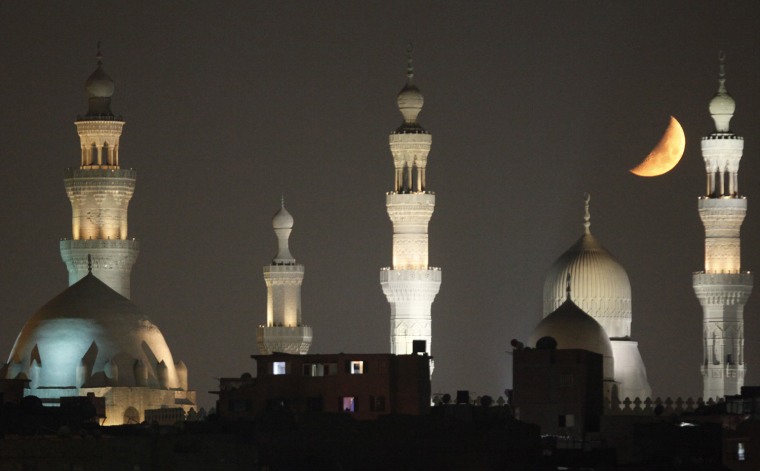The moon is getting its figurative "day in the sun" this weekend during a global celebration of lunar looks, and the great thing is that you don't need to be a hotshot astronomer to join in. More than 275 events in 40 countries are planned on Saturday during International Observe the Moon Night, with most of those events aimed at casual observers who usually wouldn't give the moon a second look. Our only natural satellite tends to get noticed only during unusual astronomical events — for example, when it blots out the sun during a solar eclipse (such as the one that occurred July 11), or when Earth's shadow creates a total lunar eclipse (as it will on Dec. 22). In contrast, this Moon Night may seem as if it's occurring when the moon is in a ho-hum phase — not a brilliant full moon, nor a slender, svelte crescent, but a couple of days after its first-quarter phase. Well, it turns out that right now is the best observing opportunity in the moon's 29-day cycle. Space.com's skywatching columnist, Joe Rao, points out that the full moon is so bright that details on the surface tend to look flat and washed-out. Just after first quarter is a much better time for seeing the moon in post-sunset skies, and for picking out the shadowed mountains and craters in sharp relief. What's more, nearly all of the moon's best features are illuminated. So what's there to see? The highlights include:
- Copernicus Crater: This prominent crater toward the upper left of the lunar disk spans 60 miles and is a mere 800 million years old. Huge rays of lighter material emanate from the impact site, which is surrounded by the ancient Carpathian Mountains.
- Tycho Crater: 50-mile-wide Tycho is thought to be even younger than Copernicus — perhaps 100 million years old — and is surrounded by a similar burst of rays. The impact that created Tycho caused material to splash up and create a characteristic central peak.
- Seas on the moon: The lunar "maria," or seas, are smooth stretches of the lunar surface filled with volcanic lava from a long-ago phase of lunar geology. The Sea of Tranquility is one of the best-known maria because it was the site of the historic Apollo 11 landing in 1969. Just last year, NASA's Lunar Reconnaissance Orbiter sent back pictures showing traces of the landing site.
- The terminator: The line between light and dark is the best place to look for dramatically lit craters and mountain ranges, particularly if you're looking through binoculars or a telescope. Among Saturday night's must-see craters along the terminator are Schiller, Gassendi and Kepler.
All these sights are described on a 10-megabyte moon map available from the Observe the Moon website. This weekend's event coincide with a milestone for the Lunar Reconnaissance Orbiter. On Thursday, the $500 million mission officially wrapped up a survey aimed at scouting out landing sites for future probes and turned its full attention to scientific investigation. This all-science phase should last another two to four years, NASA said. Moon Night has also served as an opportunity to boost a citizen-science project called Moon Zoo. The moon-cataloging project's organizers asked participants to classify geological features on 20,000 images by Sunday — adding an area twice the size of Chicago to the Moon Zoo database. It turned out that the target was reached a couple of days early. At last check, more than 32,000 images had been classified since Wednesday. "When we launched this challenge we had no idea how overwhelming and enthusiastic the response would be," the organizers reported on their Moonometer page. Which goes to show that the moon may not be ho-hum after all. More about the moon:
- Slideshow: 50 years of moon shots
- Space.com: Global swoon over the moon
- Sky & Telescope: Go ahead and observe the moon
- Universe Today: Saturday is Observe the Moon Night
- Red Orbit: NASA serves as host for Moon Night events
Join the Cosmic Log corps by signing up as my Facebook friend or hooking up on Twitter. And if you really want to be friendly, ask me about "The Case forPluto."
